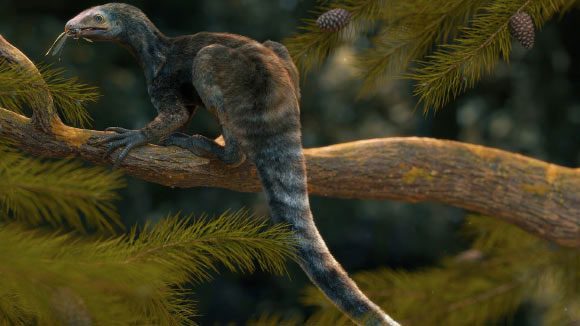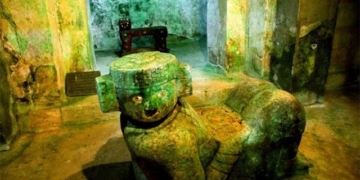A mysterious creature has been discovered in 230-million-year-old sedimentary rock in southern Brazil, identified as the ancestor of a famous lineage of monsters.
This species, completely new to science, lived during the late Triassic period, the first era of the “monster age,” which includes the Triassic, Jurassic, and Cretaceous periods dominated by giant reptiles.
Scientists from the Federal University of Santa Maria in Brazil have named it Venetoraptor gassenae, according to Sci-News.

The terrifying visage of the ancestor of pterosaurs – (Photo: Caio Fantini)
This creature is relatively small compared to others from the same period, measuring only 1 meter in length and weighing between 4-8 kg. However, analyses indicate that it is a paleontological treasure, a missing link in the family tree of ancient reptiles that scientists have long sought.
It is indeed the “ancestor” of pterosaurs – the fierce, giant flying lizards that dominated the skies during the Cretaceous period.

Characteristics suggest this is a highly agile creature, capable of running swiftly and adept at climbing trees, very aggressive in hunting – (Photo: Caio Fantini)
“Dinosaurs and pterosaurs originated during the middle or late Triassic period, with both groups surviving the extinction event at the end of this era and gradually becoming the dominant land and aerial animals during the Jurassic and Cretaceous periods,” said paleontologist Rodrigo Temp Muller, a member of the research team.
While this theory stands, the fossil record of this group of creatures remains quite scarce, rendering the world of the “monster ancestors” of the Triassic period a vague and controversial topic for decades.
Venetoraptor gassenae possesses characteristics that far exceed scientists’ expectations for what could be the ancestor of pterosaurs.
Described in a publication in the scientific journal Nature, it exhibits a body and tail quite similar to later dinosaurs, but with longer and more flexible legs.
Accompanying this are a pair of arms – which can be considered true arms, rather than forelimbs – with sharp claws and the ability to climb trees with agility akin to monkeys.
The claws also resemble miniaturized scimitars, functioning in conjunction with the creature’s fearsome beak while hunting.
This new discovery also indicates an extremely high diversity of precursor species that eventually created the later monster world, including super monsters such as dinosaurs, pterosaurs, marine reptiles, and others. The existence of these later generations is the result of a harsh process of survival and natural selection.


















































